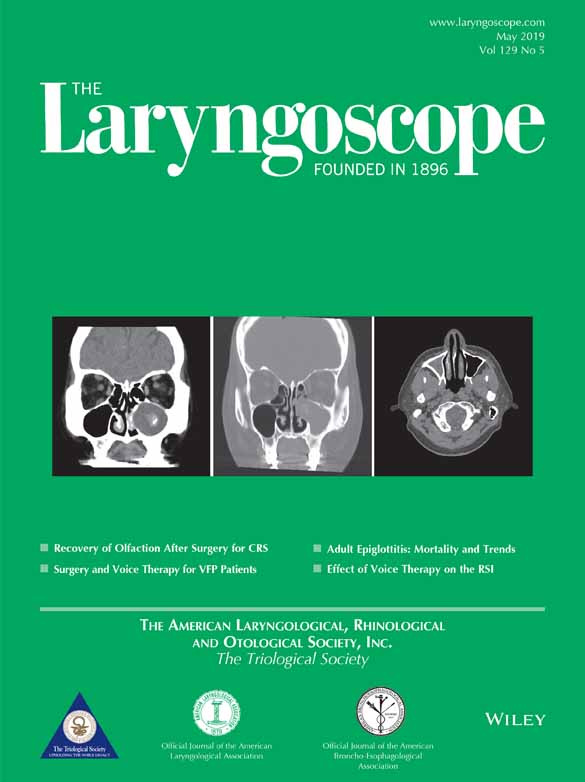A Population-Based Analysis of Nodal Metastases in Esthesioneuroblastomas of the Sinonasal Tract
Presented as a poster at the 2017 American Rhinologic Society meeting during the Combined Otolaryngological Spring Meeting, San Diego, California, U.S.A.
The authors have no funding, financial relationships, or conflicts of interest to disclose.
Abstract
Objective
Esthesioneuroblastoma is an uncommon malignancy of the sinonasal tract arising from the olfactory epithelium. Surgical management of the primary site, often via an endoscopic approach, with or without adjuvant radiation, is often curative. There is growing but ultimately limited data regarding management of the neck and the risk of nodal metastases. In this study, we examine the incidence and patterns of esthesioneuroblastoma-related cervical nodal metastases using the Surveillance, Epidemiology, and End Results (SEER) database.
Methods
The SEER registry was queried for all patients with esthesioneuroblastomas diagnosed between 1973 and 2012. Patient data was then analyzed with respect to age, sex, race, modified Kadish stage, grade, survival functions, and nodal disease including specific nodal basins.
Results
Three hundred and eighty-one cases of esthesioneuroblastoma with information on nodal metastases were identified. The overall cervical nodal metastasis rate was 8.7%. Level II metastases were most common (6.6%). A total of 4.5% of cases presented with multiple positive nodal basins. Male sex (P = 0.009) and higher tumor grade (P = 0.009) correlated with the presence of level II metastases. There was no association of primary tumor site to the presence of nodal metastases (P > 0.05). The presence of nodal disease significantly predicted poorer overall (P = 0.001) and disease-specific survival (P = 0.017).
Conclusion
The incidence of nodal metastases in esthesioneuroblastoma at diagnosis is rare, and elective management of the neck remains controversial. Primary tumor site does not appear to predict metastases at specific nodal basins. Higher tumor grade may be a harbinger of eventual nodal metastases.
Level of Evidence
NA Laryngoscope, 129:1025–1029, 2019




